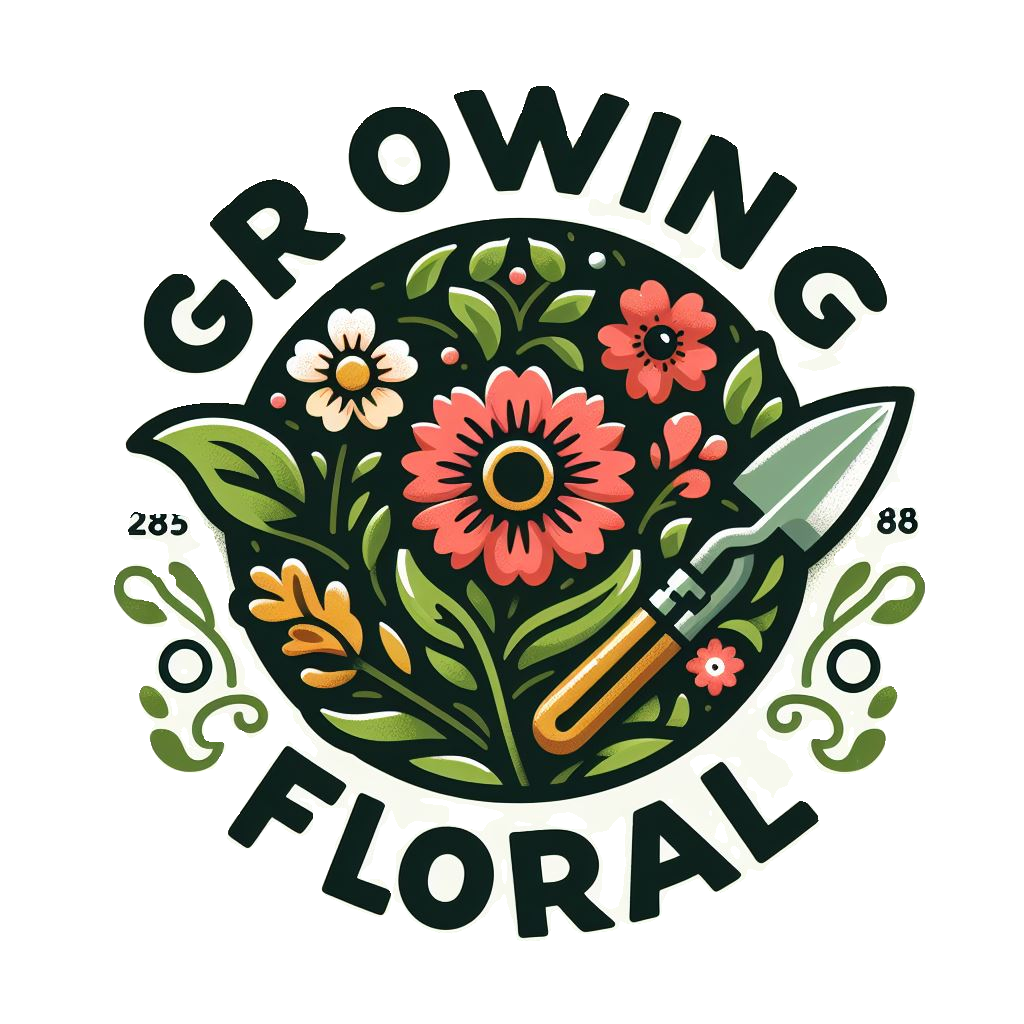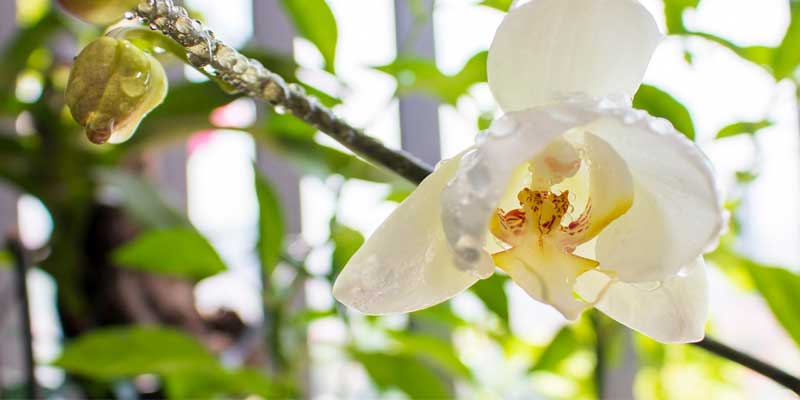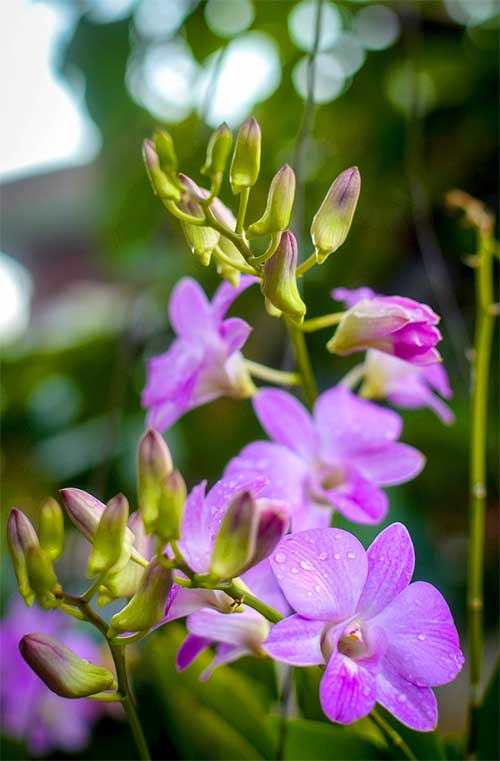The exquisite blooms and delicate allure of orchids captivate plant enthusiasts worldwide: their beauty and elegance are renowned. These exotic flowers add a touch–a cherished addition–to indoor gardens; they bring life into floral displays – vibrant bursts of color amidst greenery–and enhance tropical landscapes with their unique charm.
Despite this allure, caring for orchids presents a challenge, specifically in the realm of watering them. To ensure the health and vitality of your orchids, you must understand their watering needs.
This comprehensive guide dives into the intricacies of orchid hydration while providing insightful tips and techniques; ultimately empowering you to nurture these botanical treasures with confidence.
An Introduction to Orchids
Belonging to Orchidaceae, one of the largest and most diverse families of flowering plants, are orchids. This family comprises over 25,000 species and numerous hybrids; these remarkable plants flourish in nearly every habitat globally – from tropical rainforests to arid deserts.
They exhibit an astonishing array of forms, colors, and fragrances. Intricate adaptations evolved by orchids enable them to thrive in diverse environments which makes their cultivation a subject that is both fascinating and challenging.
Understanding Orchid Watering Needs
Their natural habitats, growth habits, and physiological adaptations shape the unique watering requirements of orchids. Several key principles apply to orchid watering despite potential variations in specific needs among different orchid species or hybrids:
Avoid Overwatering
One of the most prevalent errors in orchid care involves overwatering; however, this misstep can be easily avoided. Orchids, epiphytic or lithophytic plants usually thrive on trees or rocks within their native habitats where rapid drainage occurs and ample airflow reaches the roots.
Overwatering can lead to root rot, fungal infections, and other moisture-related problems.
Maintain Adequate Moisture
Orchids, though they favor well-drained growing mediums, still necessitate constant moisture for optimal growth. Thus, the objective is clear; one must water orchids with thoroughness and precision—permitting any surplus to gracefully drain away without causing waterlogging conditions.
Proper moisture balance is essential for healthy root growth and flowering.
Observe Environmental Cues
Pay attention to environmental cues such as temperature, humidity, and air circulation: they influence the watering needs of orchids. In warm-dry conditions specifically; or in cool-humid environments generally – orchids may necessitate more frequent watering, or conversely – require less.
Adapt to Growth Stage
The watering needs of an orchid may vary based on its growth stage; during active growth and flowering periods, it might demand more frequent hydration.
However, during dormancy or rest periods, the necessity for water could diminish.
How Often to Water Orchids
Several factors – such as the orchid species, growing environment, potting medium, and season – determine the ideal watering frequency for orchids. Orchid watering does not adhere to a one-size-fits-all approach; however, you can develop a routine tailored to your specific needs by following these guidelines:
1. Check Moisture Levels
Always verify the potting medium’s moisture levels before you water your orchids. To do this, simply insert a finger into the growing medium until it reaches the first knuckle; if it feels dry – that signals you need to provide some hydration. Hold off on watering until the medium, indeed still moist, continues to dry out further.
2. Watering Frequency
Generally, watering orchids once every 7 to 10 days during their growing season proves advantageous. Yet, this frequency might fluctuate due to elements like temperature; humidity, and air circulation playing crucial roles in determining the appropriate interval as well. Closely monitor your orchids; adjust the watering schedule as necessary, a response based on environmental conditions and plant behavior.
3. Watering Methods
Aim to thoroughly saturate the potting medium while you water your orchids, and ensure that excess water can freely drain away. Keep watering the orchid until water flows without obstruction from its drainage holes at the bottom of its pot; this guarantees adequate hydration for roots. To prevent root suffocation and rot, refrain from leaving orchids in standing water.
4. Consider the Potting Medium
The potting medium you choose for your orchids can influence their watering frequency. If you cultivate your orchids in a mix of bark or sphagnum moss, they may need more frequent watering compared to those grown in soilless mixes or semi-hydroponic setups that retain moisture better.
5. Monitor Plant Health
Vigilantly observe your orchids for potential signs of overwatering or underwatering yellowing leaves, wilting foliage, and a soggy potting medium. Calibrate your watering practices in response; this will maintain optimal moisture levels and foster robust growth.
Seasonal Variations in Orchid Watering
When you determine your orchid watering schedule, consider the seasonal variations that may fluctuate with changes in temperature, humidity, and daylight hours: these factors reflect your orchid’s specific needs.
Spring and Summer
During the warmer months of spring and summer, orchids might demand more frequent watering due to heightened evaporation and transpiration rates; hence, close monitoring of their moisture levels becomes essential, act promptly with hydration measures to avert dehydration.
Fall and Winter
Orchids, during the fall and winter seasons, typically transition into a phase of dormancy or experience decreased growth. During this period of rest – as they necessitate less moisture – the frequency at which we water them may reduce. Exercise caution, in the dormant season, particularly under cool, low-light conditions, overwatering orchids can precipitate root rot.
Considerations of Humidity
Orchids in low-humidity regions or indoor environments with artificial heating/air conditioning may necessitate more frequent watering; this compensates for moisture loss via evaporation.
Deliberate over incorporating humidity trays, room humidifiers, or misting techniques to bolster ambient humidity levels and foster a conducive growth environment for your orchids.
Tips for Orchid Watering Success
Consider the following tips and best practices to guarantee the success of your orchid watering routine:
1. Utilize Room-Temperature Water
Utilize room-temperature water to water your orchids; this will prevent shocking the plants with abrupt temperature changes. Let tap water rest for several hours, a process that dissipates chlorine and other chemicals prior to its application on your orchids.
2. Water Early in the Day
Early in the day, water your orchids to ensure that their foliage and potting medium have ample time for drying before nightfall. Leaving moist foliage overnight can encourage fungal diseases and rot – this is especially prevalent in humid environments like greenhouses or indoor growing spaces.
3. Monitor Drainage
Ensure orchid pots possess sufficient drainage holes for the unobstructed escape of excess water. Employ pot options with accompanying drainage trays; alternatively, elevate the pots on feet specifically designed to avert root poolings caused by excessive watering.
Check drainage holes regularly to ensure they remain clear and unclogged.
4. Avoid Wetting Leaves
When watering orchids, it is essential to avoid excessive leaf wetting. The water droplets on the foliage may function as magnifying lenses that focus sunlight and induce leaf burns. Direct water carefully at the base of the plant to minimize leaf contact.
5. Consider Watering Frequency for Container Type
The choice of container type indeed affects the frequency at which you should water your orchids. For instance, those cultivated in porous clay pots may dehydrate more rapidly than their counterparts housed within plastic or ceramic containers.
Adjust your watering schedule accordingly based on the container type and material.
6. Use a Moisture Meter
Consider implementing the use of a moisture meter to enhance the accuracy of monitoring soil moisture levels. This tool aids you in determining when it’s necessary to water your orchids, utilizing objective measurements of moisture content within their potting medium.
7. Humidity Management
Maintain optimal humidity levels around orchids to avert moisture stress and dehydration. Enhance ambient humidity levels, especially in dry indoor environments, by situating orchids in trays filled with water and pebbles or deploying a room humidifier.
8. Observe Individual Plant Needs
Observe the individual needs of each plant since every species or hybrid in the orchid family may require unique watering methods, dictated by its natural habitat and growth habits.
Invest time into researching your particular orchids; this will allow you to tailor your approach to watering—ensuring not only optimal growth but also an abundance of blooms.
Conclusion
Watering orchids is both an art and a science, requiring careful observation, attention to detail, and a deep understanding of plant needs. By following the guidelines outlined in this article and considering factors such as environmental conditions, seasonal variations, and individual plant requirements, you can develop a successful orchid watering routine that promotes healthy growth, vibrant blooms, and overall well-being for your orchids.
Remember to monitor your orchids closely, adapt your watering practices as needed, and enjoy the beauty and rewards of nurturing these exquisite botanical treasures. With patience, practice, and a little bit of care, you can cultivate thriving orchids that bring joy and beauty into your home or garden for years to come.



Leave a Reply